Villa Panza is a grand 18th century mansion in the hillside suburb of Biumo Superiore, overlooking the city of Varese. It was the home of Count Giuseppe Panza, art collector and a great champion of Minimalist and Conceptual Art. He bought his first painting in 1956, by Antoni Tàpies and in 1966 he began collecting work by Brice Marden, Richard Serra and James Turrell. In 1996 the house was donated to the nation and opened to the public after major restoration work in 2000.
Giuseppe Panza died in 2010. His art collection was left to the Solomon R Guggenheim Foundation in New York, but it’s on permanent loan to Fondo Ambiente Italiano who now look after Villa Panza.
There was a discussion in Varese on the 9th of June, 1994.
Signed: Giuseppe Panza & Ian Wilson
Ian Wilson‘s spoken artworks are called discussions. They are neither recorded nor transcribed, they leave no residue, existing only during their occurrence. But note the significance of the picture frame.
These elegant rooms with ornate stucco ceilings and refined Baroque furnishings are hung with a contrasting selection of mostly monochrome paintings in a spectacular and surprising harmony.
A painting by Max Cole in the sitting room.
Another artist who cannot be categorized is Max Cole. In her pictures there is almost nothing to be seen, there is no color, and they are without form. There is an incredible amount of tiny vertical black lines, each painted next to the other, and all aligned horizontally. This is a work of great precision since corrections cannot be made, and if a mistake is made, the whole thing has to be done again from scratch. The operation is repeated thousands of times in each picture, a completely senseless job and unthinkably monotonous… This tireless obstinacy in repeating the same gesture could be compared to a prayer, an invocation to our Creator for eternal joy…
– from Memories of a Collector by Giuseppe Panza, 2006.
Paintings by Phil Sims in the billiard room.
Another protagonist of the art of color is Phil Sims. He paints pictures that have an enormous force of attraction… He has a very special sensitivity toward color and arrives at a result that can only be his. I have often asked myself how he achieves this miracle. Perhaps it consists in the numerous veils of paint he places over each other: there are about forty to sixty successive layers of almost identical colors. This is a slow, gradual process toward the final objective… The artist stops when the miracle has occurred. The material has been transformed into an idea… I have bought many paintings by Phil Sims. I just cannot stop myself when I see new ones. – Ibid.
Paintings by Ford Beckman in the salottino della carpinata.
The works Ford Beckman created between 1985 and 1991 seem, though only apparently, to use a Minimalist language… but in fact the content is highly expressionist… The composition is usually a black square, at times white, around which is a slightly larger space painted in yellows, whites, brown-yellows, either lighter or darker. The dominating surface is the black in the center. It is dense, tar-like black, without reflections and seeming to absorb the light. This is the darkness of starless night. It is what will be found not just at the end of life but at the end of the universe, an end without return, definitive… At other times the larger surface is white and shines with light: this is the return of hope, the expectation of salvation, final happiness. – Ibid.
Paintings by Max Cole in the small dining room.
There is a rigorous rationality and a method running through all the artist’s work. She has done the same thing all her life. It is not a labor that has lasted years but decades. And yet her paintings are always different and their power never lessens. At times the lines are close together, one almost placed against the other; in other works they are more distanced. They can be long or short. The horizontal lines consisting of the tiny vertical marks can also be nearer or more separated. Sometimes the background is white or dark red. And with this vocabulary of a few elements her language is practically infinite… Her basic aim is… a mystic and contemplative attitude. – Ibid.
A painting by Ford Beckman in the imperial dressing room.
Beckman’s pictures are painted on canvas glued to a heavy plywood panel stiffened by a wooden structure. The picture thus acquires mass: it is heavy and seems to want to impose itself physically too. At times, beside the painted panel there is another, exactly the same size, of unpainted wood: this is matter, inert and lifeless, the passive acceptance of fate. His works are intensely evocative and their abstract language becomes a concrete message about our destiny. – Ibid.
Paintings by David Simpson in the stateroom.
David Simpson is the oldest of these color painters: he was in fact born in California in 1928… He has always created monochrome abstract paintings… At the end of the ‘eighties he discovered a new possibility: metallic colors mixed with a mineral that reflected light from particular positions. When you move in front of the painting and change viewpoint the color changes completely: gray becomes a light-saturated silver, pale yellow becomes a rich gold, gray-green becomes a luminous green. There is always in these works the passage from an inert opacity to light. – Ibid.
A painting by Alfonso Fratteggiani in the anteroom.
I met Fratteggiani some years ago through Phil Sims, who was a guest in his house in the country. He was involved not only with agriculture but also music and art, organizing exhibitions and concerts; his wife, Ulrike Brand, is an internationally known cellist… In a room of his old house, which had been built in about the eleventh century, there were a lot of small paintings hung on the walls… The best were painted on a heavy stone support. The color was laid on without any kind of binder. The impalpable pigment dust penetrated into the microscopic cavities of the stone. This is a property that other kinds of stone do not have, only a particular stone found in Tuscany and Umbria, known as Pietra Serena, and used by Brunelleschi in the fifteenth century for the churches in Florence… Fratteggiani continues to work with color, occasionally worried that bad weather might damage his vines, at times journeying to the Apennines to choose sheep for his flock… Because of the weight of the stone he only makes small pictures, but they have all the imposing presence of large works… Many people are struck by the colors and ask me for more information, for this is an art that strikes straight at our instincts. – Ibid.
A painting by Ruth Ann Fredenthal in the first floor sitting room.
Ruth Ann Fredenthal is an artist who at first sight seems to paint pictures with just one color, but when you look at them with attention you discover this is not so… The painted surface seems to disappear and opens up a vision of infinite space… painted with various glazes: fifty or sixty… There are three or four colors disseminated over the surface. Their differences are minimal and can be seen only by looking carefully… The colors are both strong and tenuous at the same time; they give the sensation of dilating space. They seem to be windows opening toward the sky at twilight, at the moment when there is still light but it is fading; when the colors of sunset have disappeared, then the presence of the infinite becomes stronger. – Ibid.
Paintings by David Simpson in the first floor dining room.
I have in front of me paintings by Simpson, Sims and Fredenthal in the rooms where previously there had been Rothkos, Klines and Rauschenbergs… But I feel no important difference: my feelings have the same intensity… I have within myself a thermometer for measuring beauty. I realize quite quickly when this is not functioning; but when this measurement of vision is repeated, then – if you will allow me to say so – it proves itself to be infallible. Fifty years of history demonstrate the truth of this. The thermometer has become even more refined over time. It measures the temperature of my feelings. It is something I also feel when looking at antique art. – Ibid.
In the spring of 1958 Franco Monti organized a show of primitive art with pre-Columbian and African sculptures in the Ariete Gallery in Milan. This was a great event for me. I could research an idea that I considered important, in a real and concrete manner… The art object expresses in the most complete way a vision of the world and life that can be communicated with the tool of intuition, not with logical arguments that impoverish the message the idea contains. To exhibit this art so different from the usual in a contemporary art gallery seemed a contradiction, but in fact there were many affinities… It is an art created by anonymous and unknown artists, one in which the creator’s personality is at one with his community. It was not an art created for aesthetic enjoyment but was rather an instrument for ritual, a means for communicating with the divinity, to placate or invoke the forces of nature… Its supernatural power was its beauty and that is exactly the beauty we appreciate. The distinction that we Westerners make between aesthetics and meaning is arbitrary. In fact this separation does not exist; real art is always a tool for communicating with the unknown that is within and around us… Thanks to Franco Monti I created a small collection of primitive, above all African, art, some sixty pieces both large and small… These are a permanent part of the furnishing, objects I share my life with, and they match perfectly our Renaissance furniture that seems so distant culturally: they are placed on top of them. – Ibid.
In another part of the house, rooms were devoted to a temporary exhibition, Aisthesis: All’origine delle sensazioni, which featured work by Robert Irwin and James Turrell, two artists who had a long association with Giuseppe Panza.
James Turrell, Red Orange Triangle Outie, 2013
A hologram, according to James Turrell, is the starting point to investigate light phenomena by capturing its fleeting qualities and allowing the light itself to become an object.
Robert Irwin, Untitled (Column), 2011
An acrylic column, invisible but detectable at the same time. According to the natural light that enters the room and according to the angle of observation, the column might disappear or refract rainbows.
AISTHESIS
Interviews with Robert Irwin & James Turrell
James Turrell, Shanta (Blue), 1967
A beam of light projected at the crossing of two walls creates an irregular parallelepiped that at first appears as a three-dimensional object, creating what Turrell calls “thingness of light”.
It was about here that things got complicated. We found ourselves walking down a corridor with rooms off to either side, each one illuminated by coloured fluorescent tubes in varying arrangements by Dan Flavin, part of Villa Panza’s permanent collection. These were not in the Aisthesis exhibition.
These fluorescent tubes seemed to me to be a new world made from light… They were works that needed mystical attention if they were to be understood… More than any other works of art they had to be contemplated in silence. Here was the apparition of a supernatural image. It was religious art, without symbols, without rites and without intermediaries; it was the direct and immediate presence of the supernatural, the way to the absolute. Light was no longer an illuminating body but manifested its true nature as pure energy: the least physical thing in a physical world. It was the most direct path to the invisible. This was the art my subconscious mind had been waiting for… I had bought twenty-seven works… I had set space aside for his works, more than for any other artist. Each work is exhibited in the best possible way, better than in any museum… the installation is permanent… – Ibid.
Robert Irwin, Varese Portal Room, 1973
At the end of the corridor are a series of rooms devoted to installations by Robert Irwin and James Turrell. These are permanent too, but also included in the temporary Aisthesis exhibition.
Robert Irwin, Varese Window Room, 1992
Irwin was and is a thinker, a deep connoisseur of philosophical problems, and it is fascinating to talk to him about these problems: this is a rare ability among artists who are generally more intuitive than rational… For Irwin this was a highly interesting activity… Universities would invite him to hold conversations with their students. This was a period in which the interest in research was intense… Today, the beginning of the new millennium, this interest is almost extinguished. Many people consider problems far too difficult. You just need to think of the present and the problems of every day, which are almost always financial. – Ibid.
James Turrell, Sky Space 1, Varese, 1976
I do not remember if Turrell came to Biumo in the fall of 1973 or in the following spring. He stayed a long time, over a month, to plan a work that required some alterations of the house. The empty rooms on the first floor, over the stables, allowed a great deal of freedom. The three rooms at the end of the corridor were the best… The wall at the end of the corridor was easily adapted… It was more complicated to install the opening in the room to give a vision of the sky from straight above. A large square hole had to be made in the roof, each side some three meters long… It was then made smaller by about fifty centimeters along each side by installing a sheet of copper painted white in order to create a sharp division between the surface of the ceiling and the sky… At midday the light is blinding, and it changes each hour: sunset is magical, the clouds cross the sky, each season is different. In the fall when there is a rare foggy day, the atmosphere in the whole room is silent and filled with an “extraterrestrial” enchantment. – Ibid.
James Turrell, Afrum 1 (White), 1966
“A bright two-dimensional image is projected on the walls of a room by following precise angles in order to create the illusion of being in front of a three-dimensional object. The spectator perceives the presence of a bright solid that reveals its elusive nature only after a more attentive observation.”
Robert Irwin, Varese Scrim, 2013
Aisthesis continued downstairs with an installation formed from screens of semi-transparent scrim arranged in a simple labyrinth, illuminated by beams of daylight through narrow vertical windows.
Robert Irwin, Piccadilly, 2013
A sequence of fluorescent strip lights, first seen at Pace Gallery, London, inspired by Piccadilly Circus.
James Turrell, Sight Unseen, Ganzfeld, 2013
A white room. An immersive light sculpture. We removed our shoes and entered the precious space, our eyes unable to focus on our surroundings. After a few moments the colour slowly changed, then began quick flashes, pulsing waves of light, designed to create a disorienting experience to give the spectator the possibility to “perceive his or her own perception”.
But if these were The Doors of Perception then we perceived only the doors. We couldn’t see the wood for the trees or the picture for the frame. We were in a room with lots of other people and the lights were flashing. No visions, no transcendental epiphanies, no altered consciousness. Just dazed and glad to get out. It all felt a bit too prescribed, we were being manipulated, maybe even brainwashed!
We emerged blinking into the daylight outside the old stables. The arched windows with the slot apertures where Irwin’s Varese Scrim was installed and X marks the spot of his Varese Portal Room.
Martin Puryear, Shrine, 1985
In one of the stables we found this wonderfully evocative sculpture by Martin Puryear, beautifully constructed by hand. At first it seems like some reclaimed piece of farm equipment or maybe a wine vat, as if it had a previous function that governed its form, vernacular rather than monumental.
This majestic, 32-meter-high oak (Quercus cerris) is one of the oldest examples in Italy. Unfortunately, over recent years, the tree has manifested signs of serious suffering, and all attempts to cure it have thus far been in vain – Fondo Ambiente Italiano.
Stuart Ian Frost, Embrace, 2013
The gardens were the venue for an exhibition of ephemeral sculpture, Art in Nature, featuring three works by Stuart Ian Frost and one site-specific installation by Bob Verschueren.
Stuart Ian Frost, Fagus, 2013
Stuart Ian Frost, Tribute To The Carpinata, 2013
Bob Verschueren, The Slope, 2014
Villa Panza / Villa Panza / Villa Panza / Villa Panza
※
Then back in the car I opened the sun roof and I found my own James Turrell Sky Space…



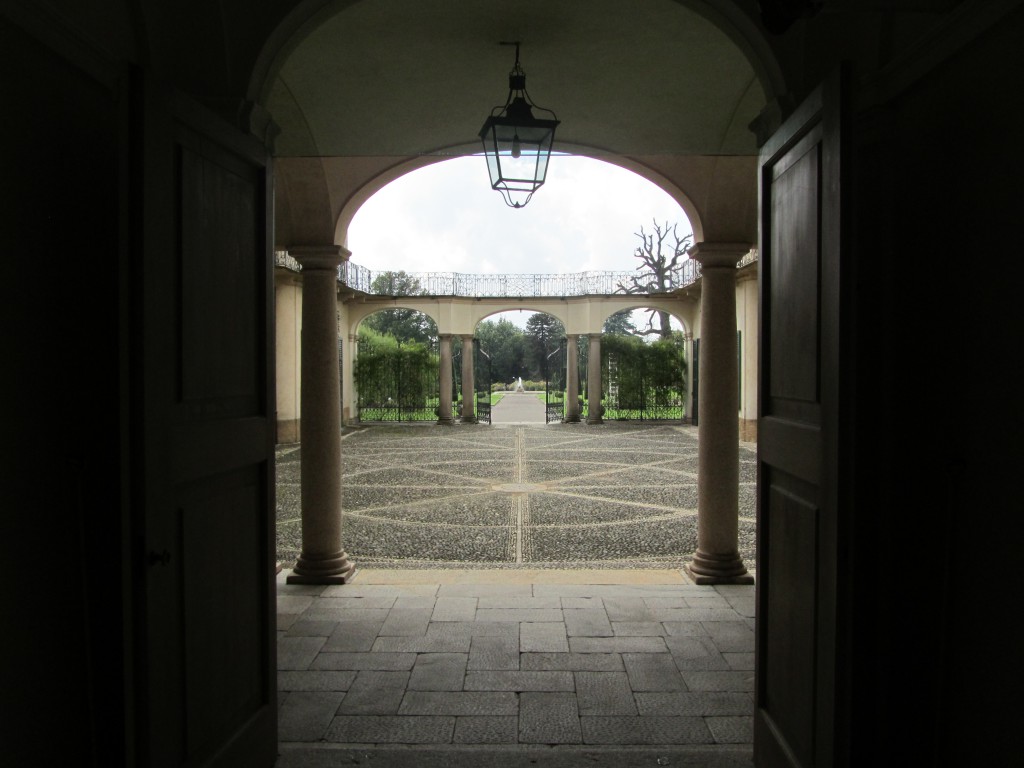
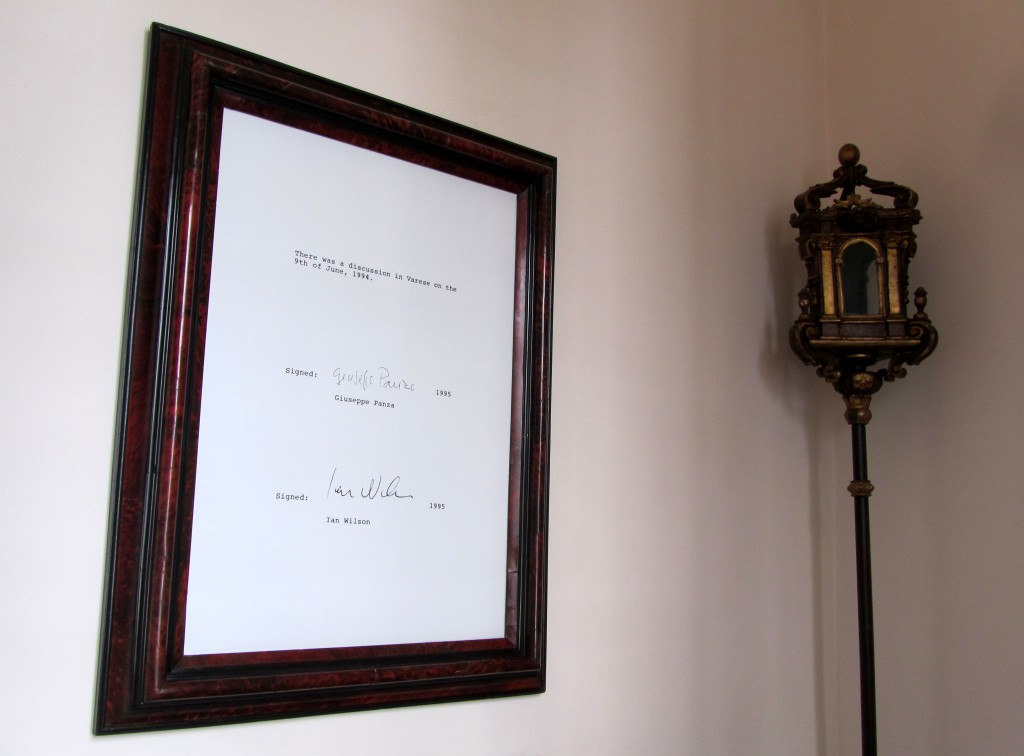
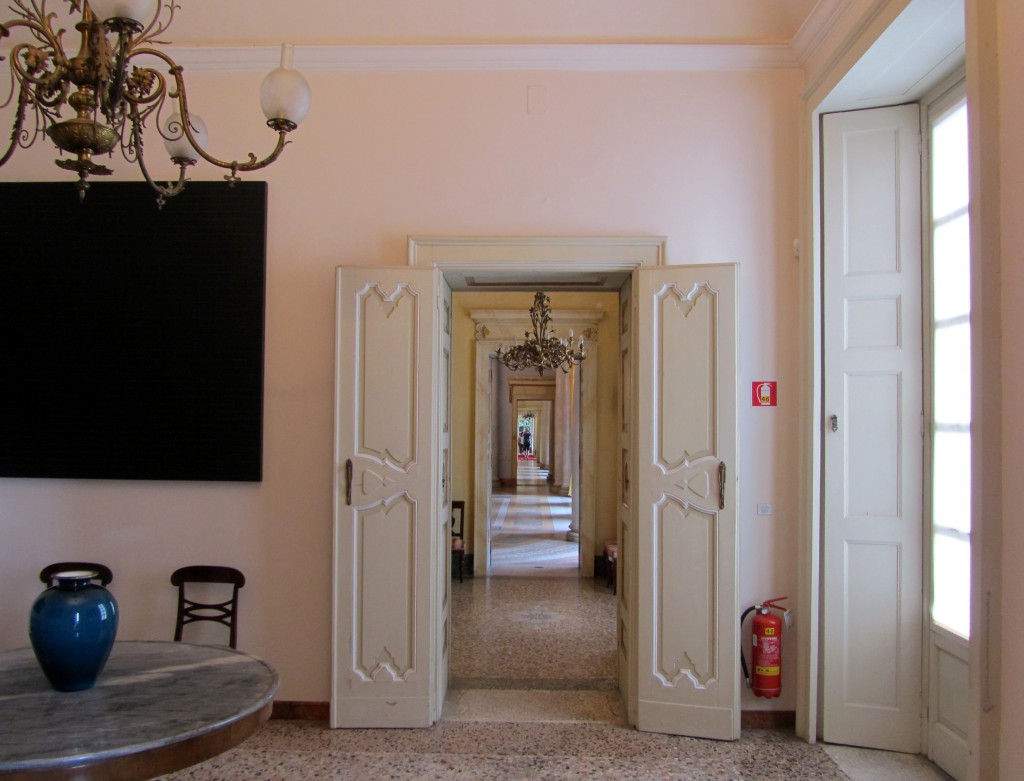
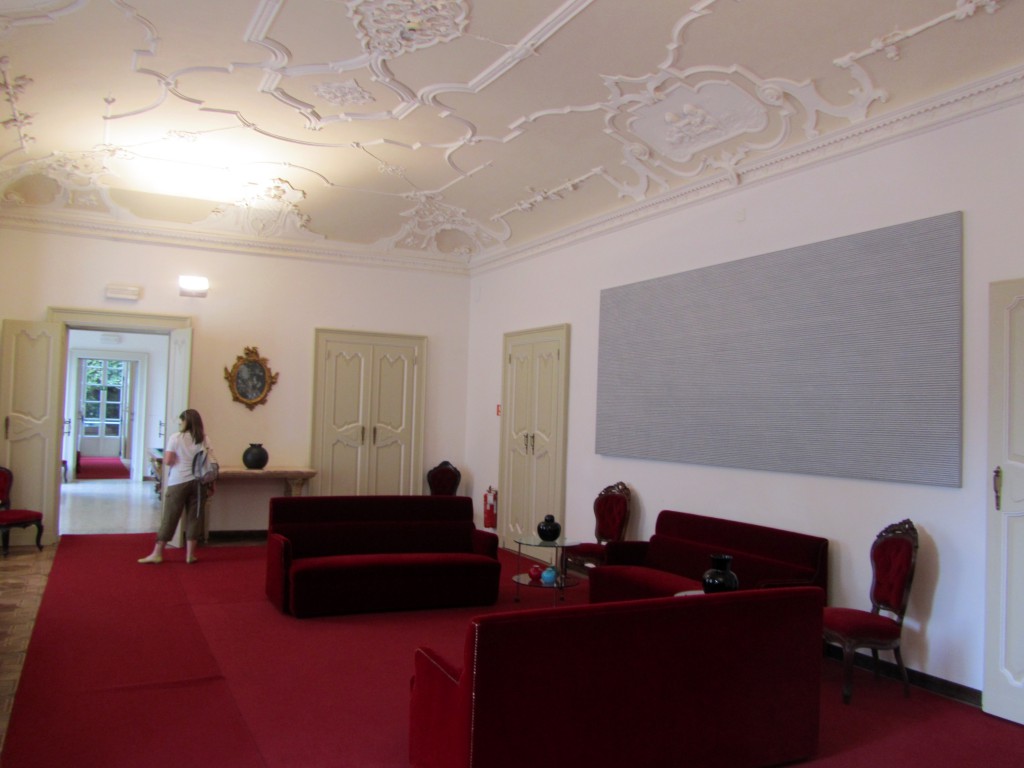
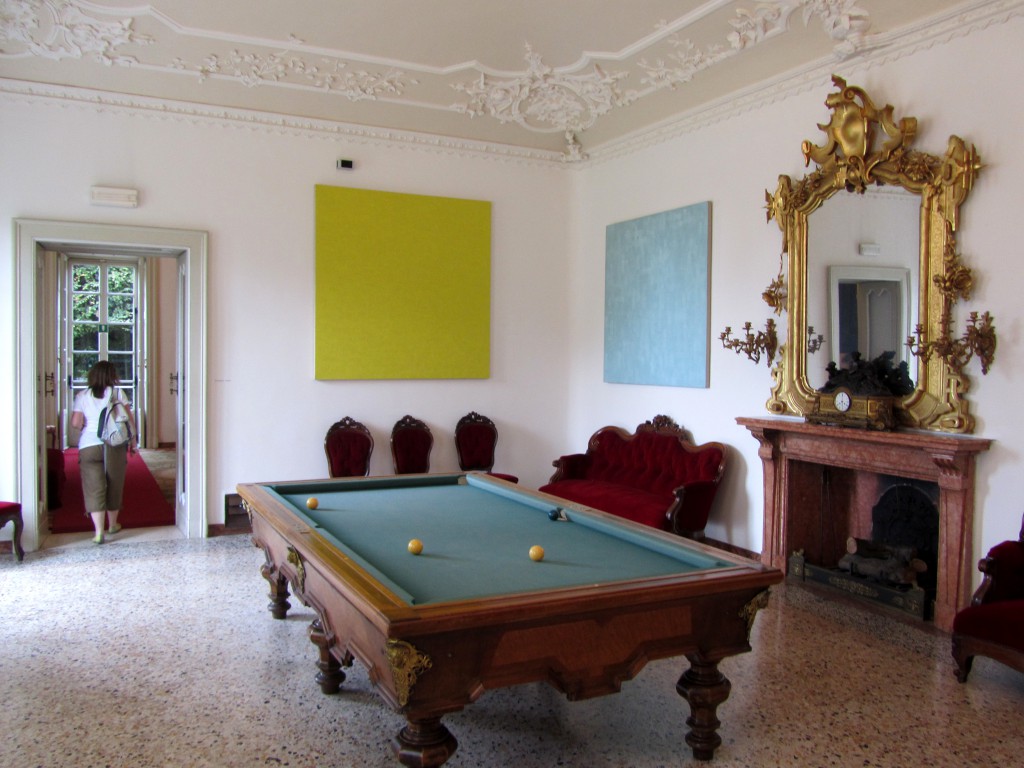
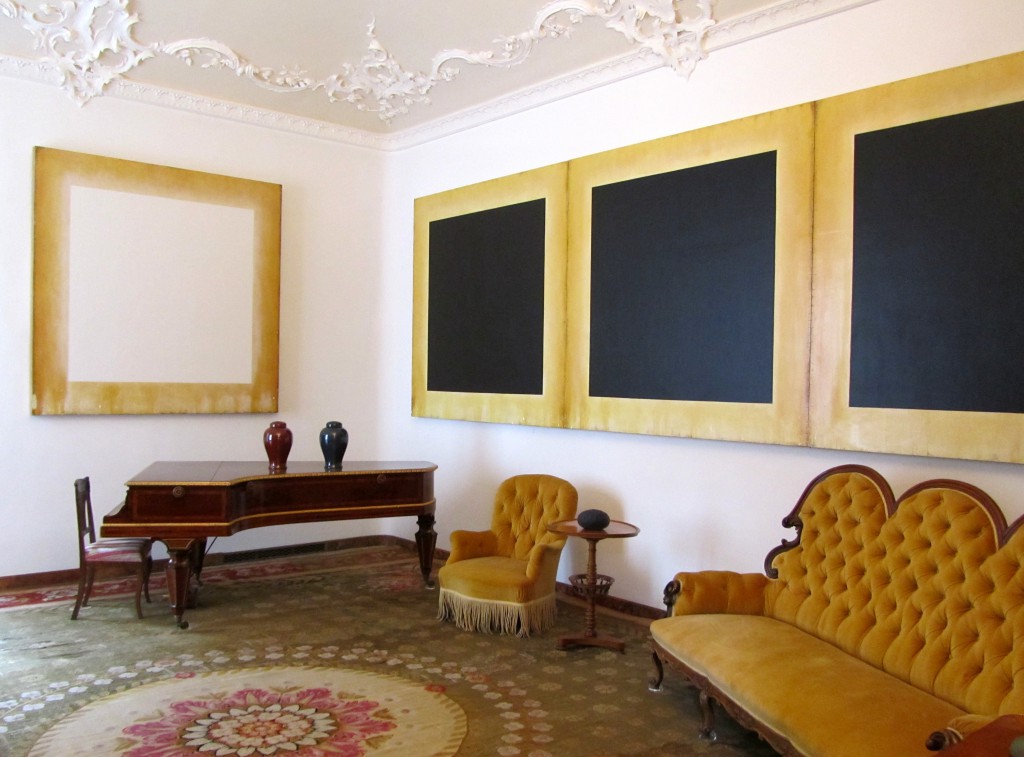

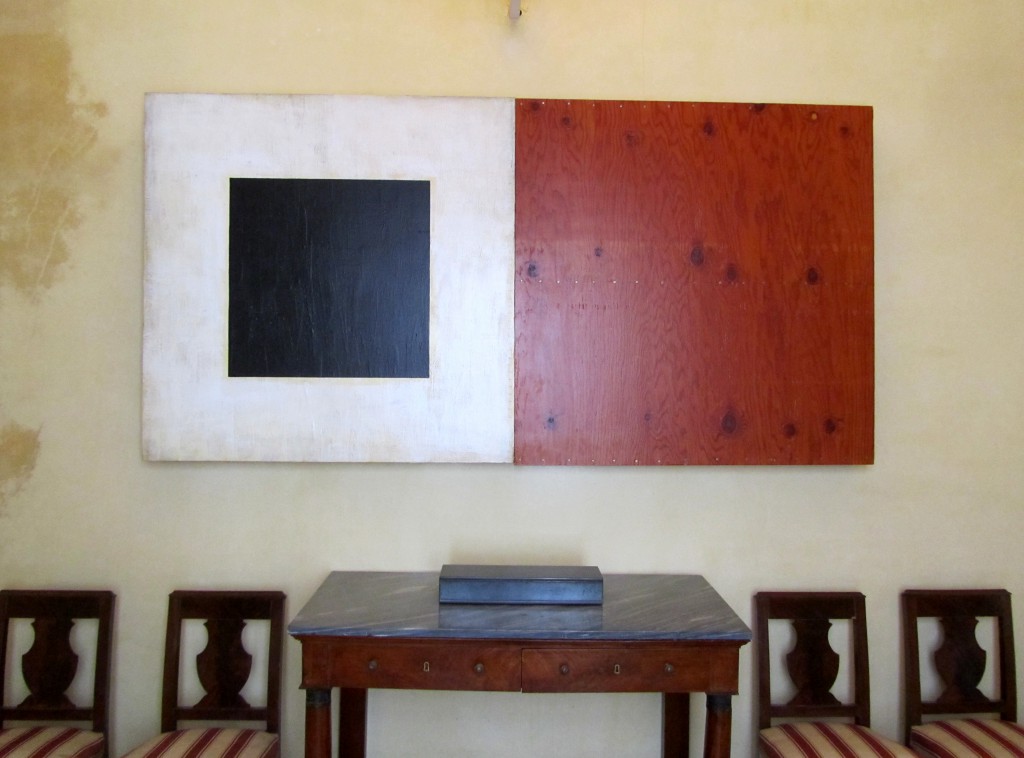
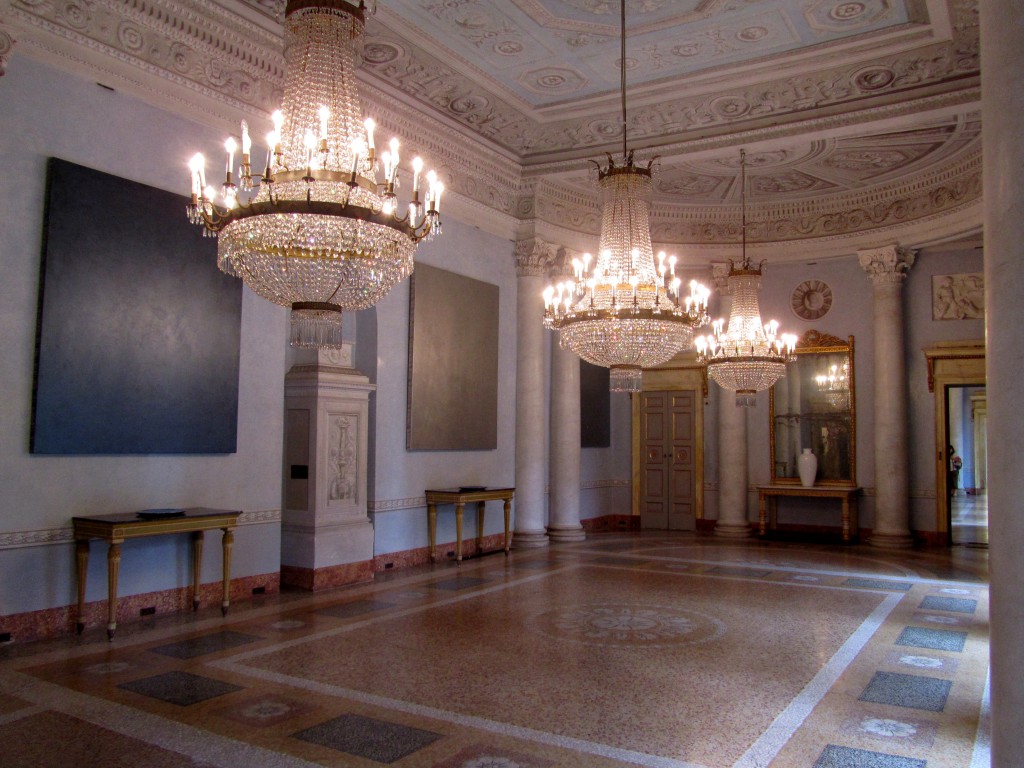
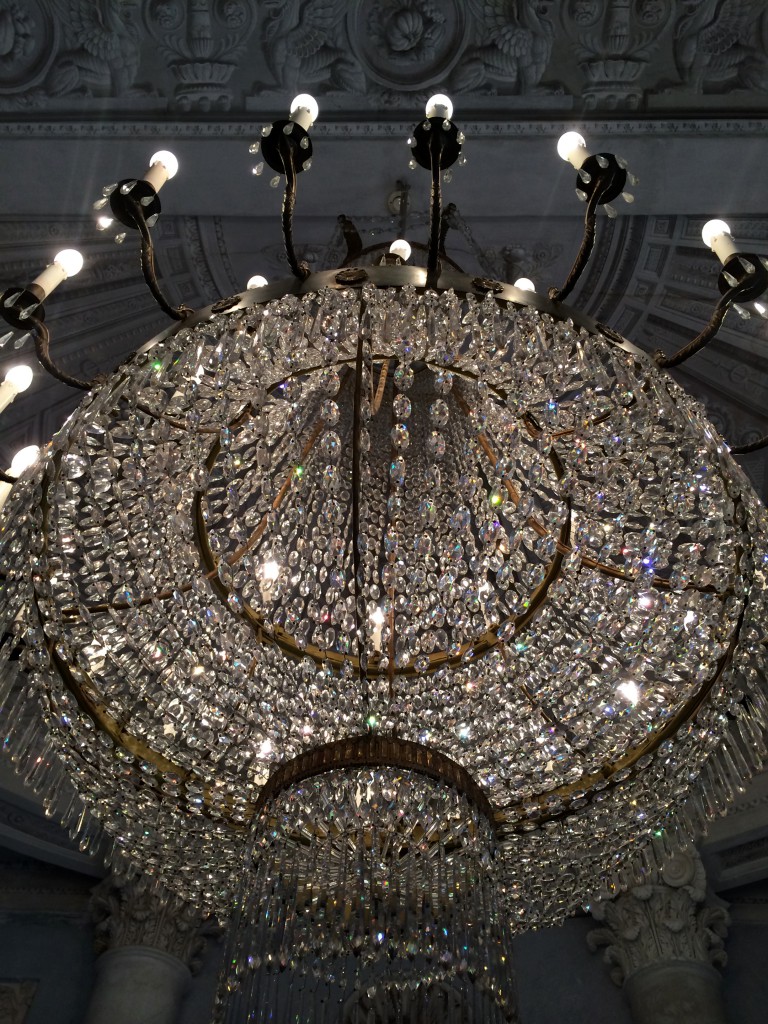

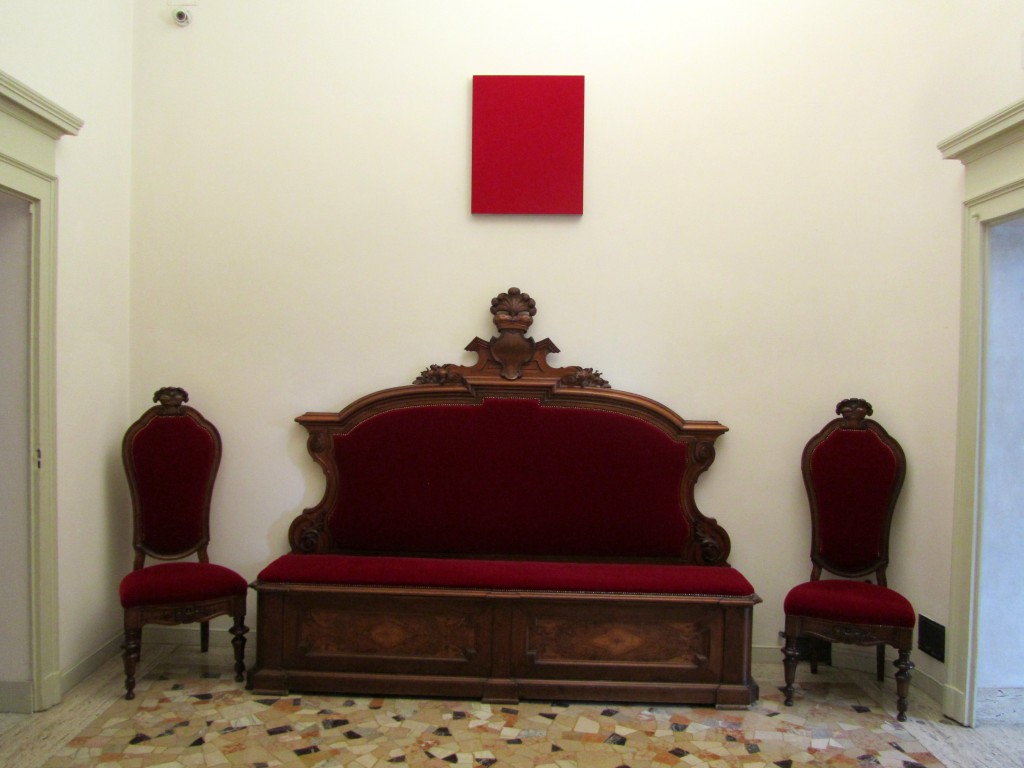
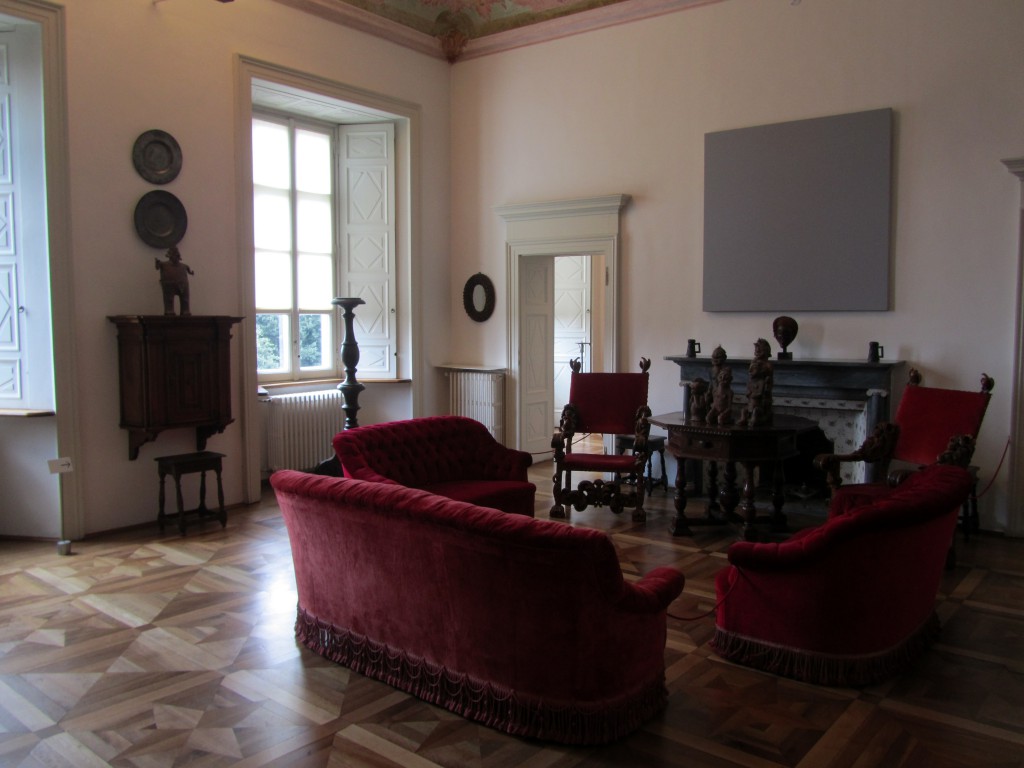
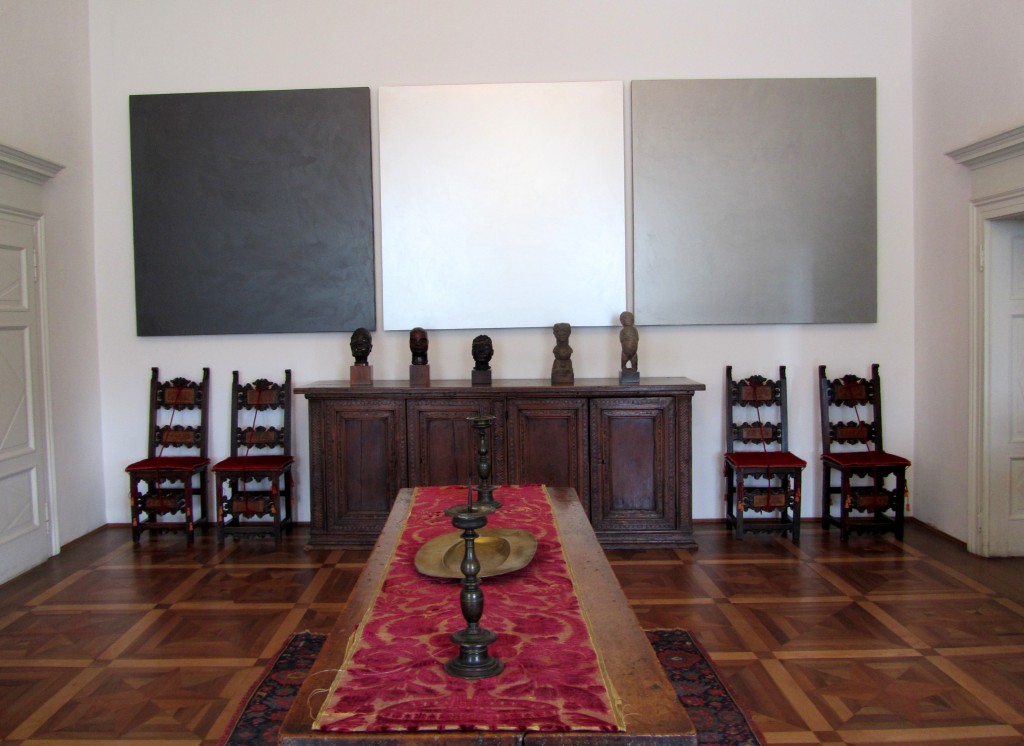

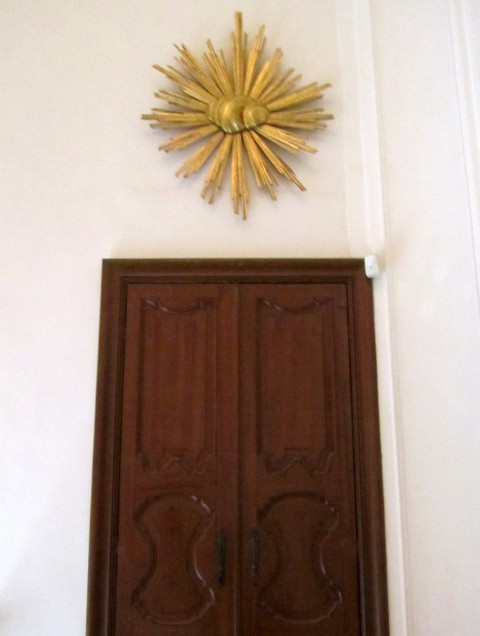
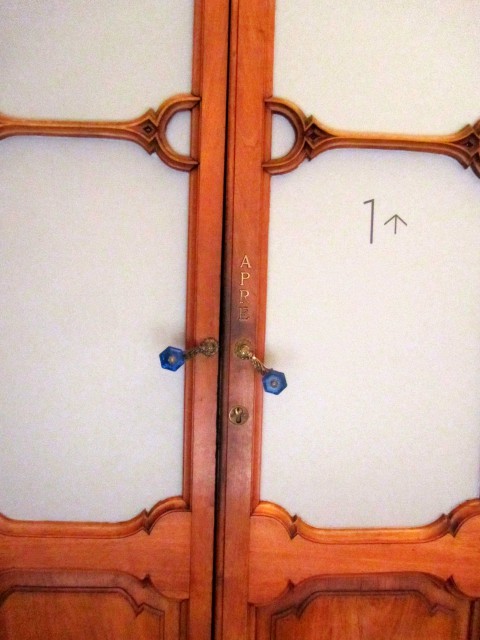
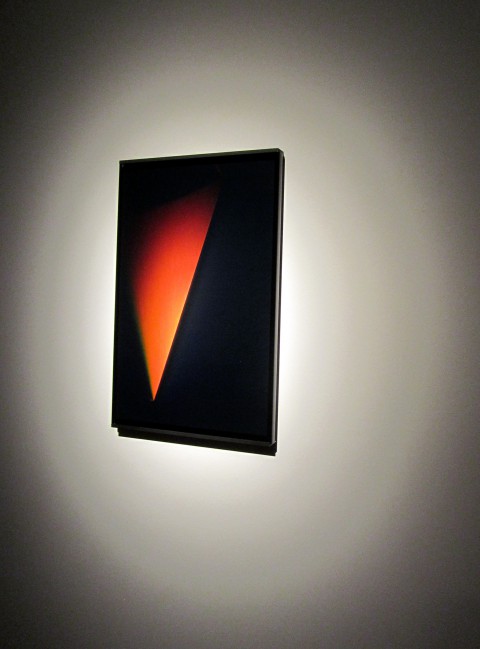
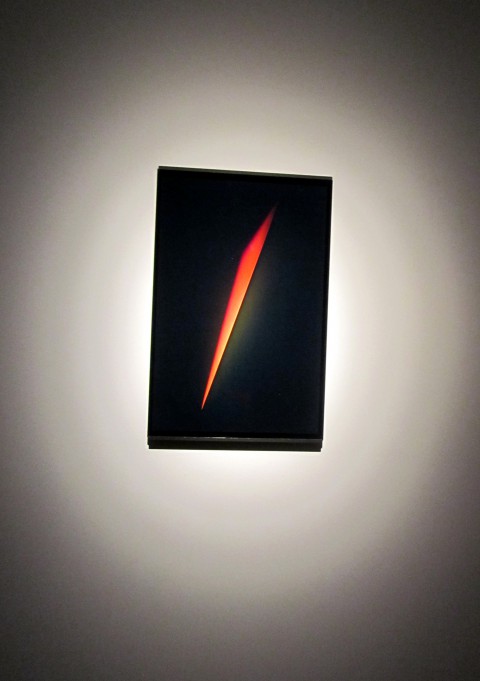

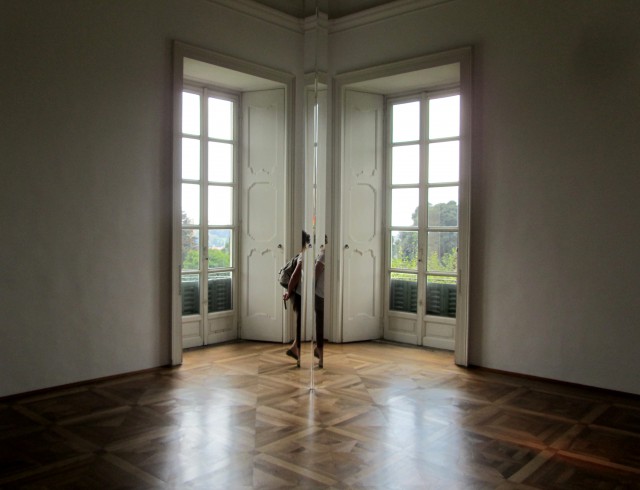
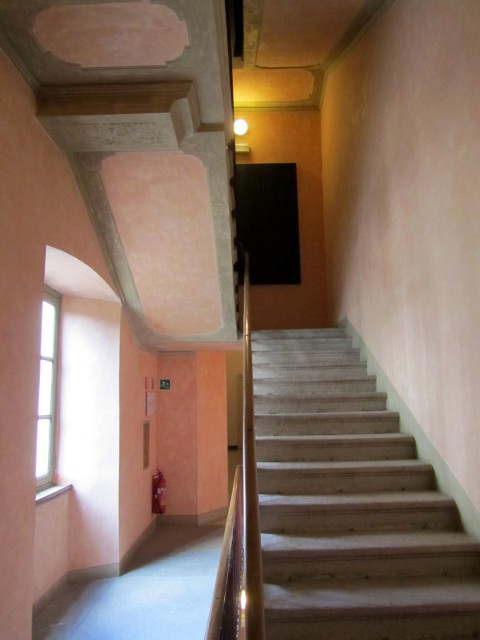

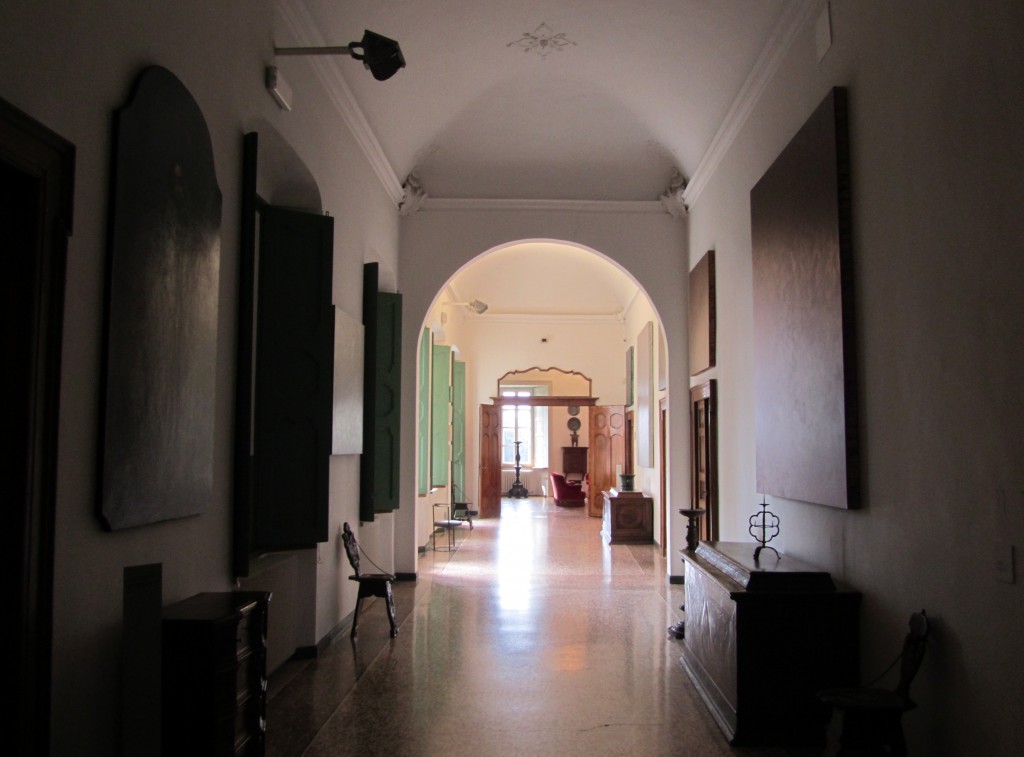
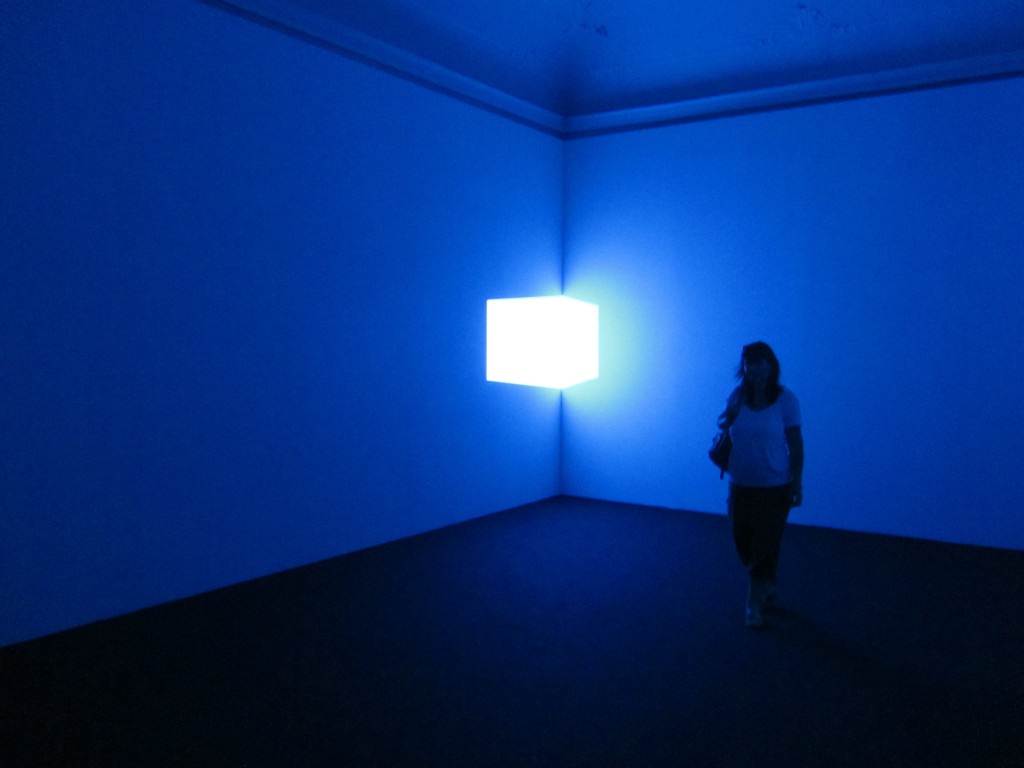
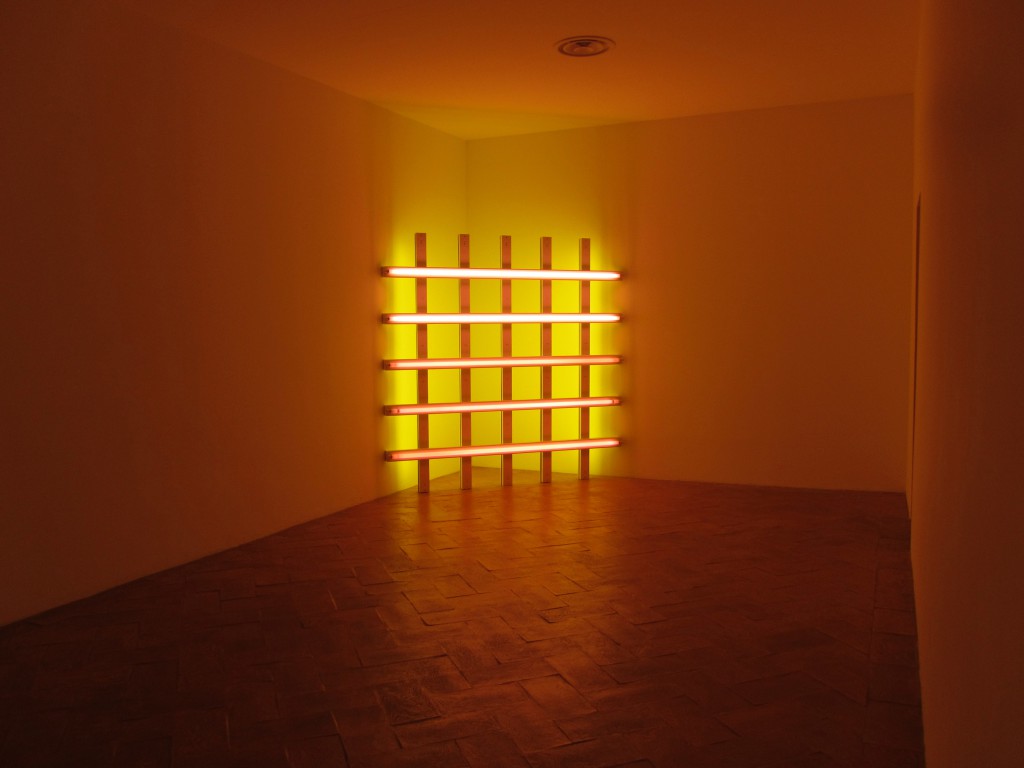
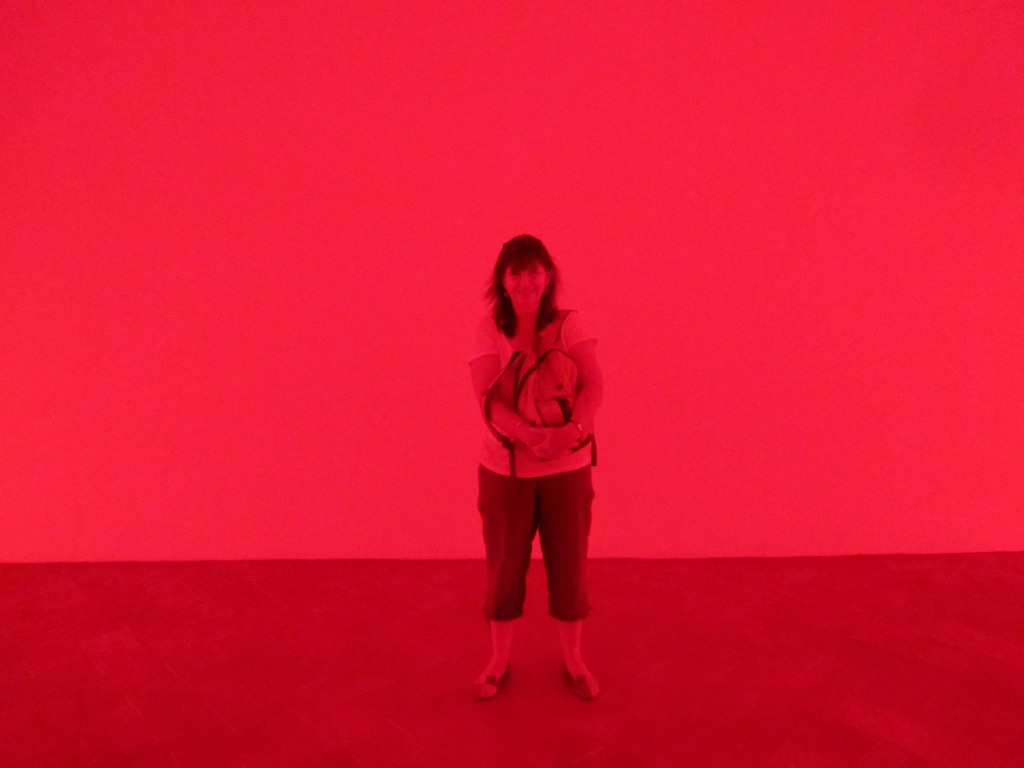
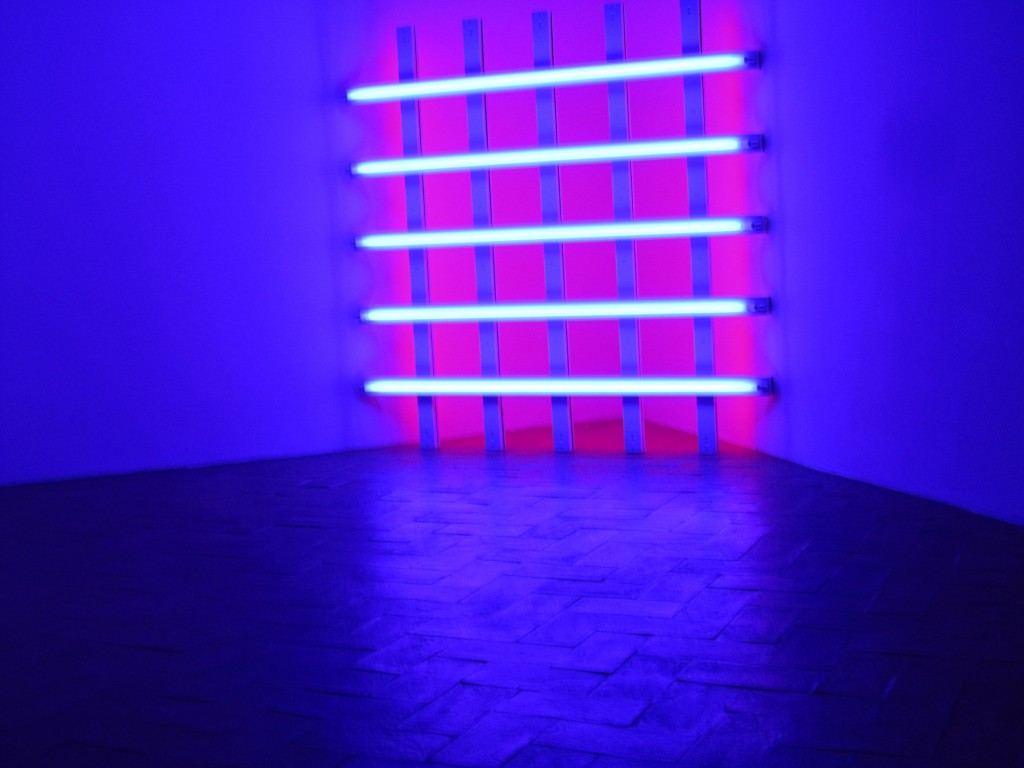

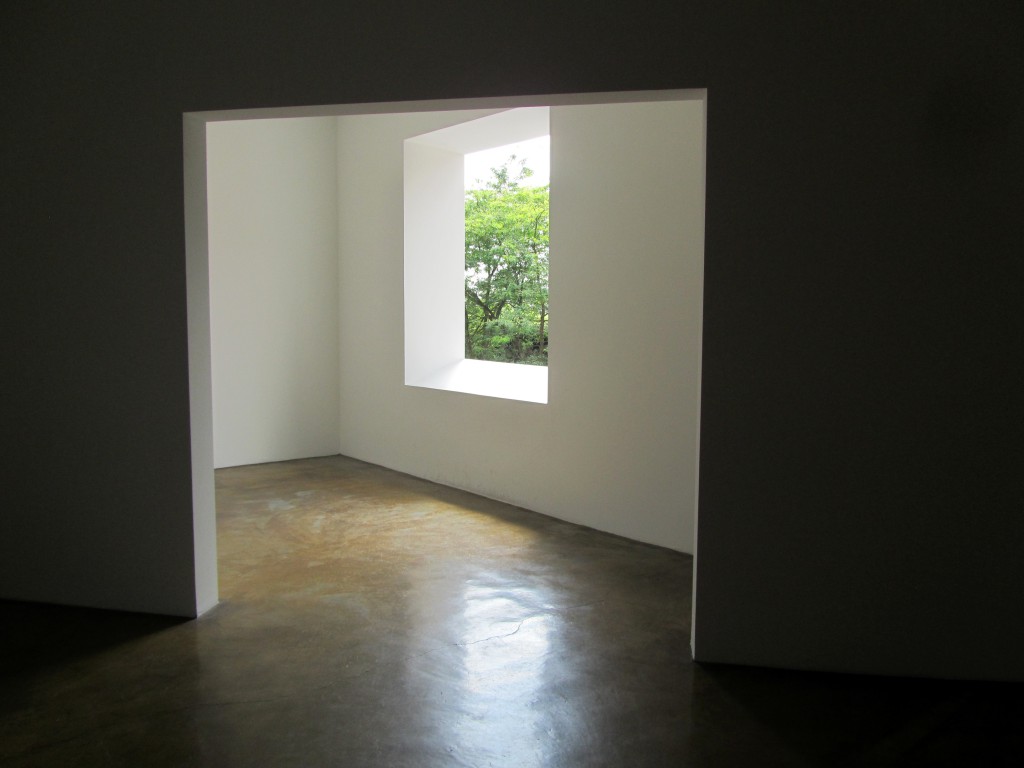

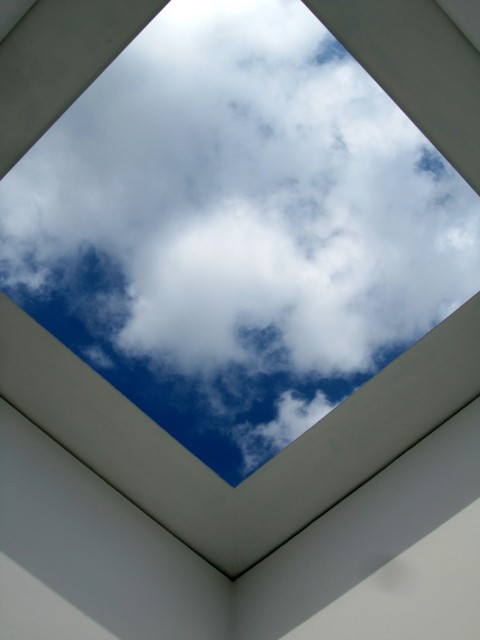

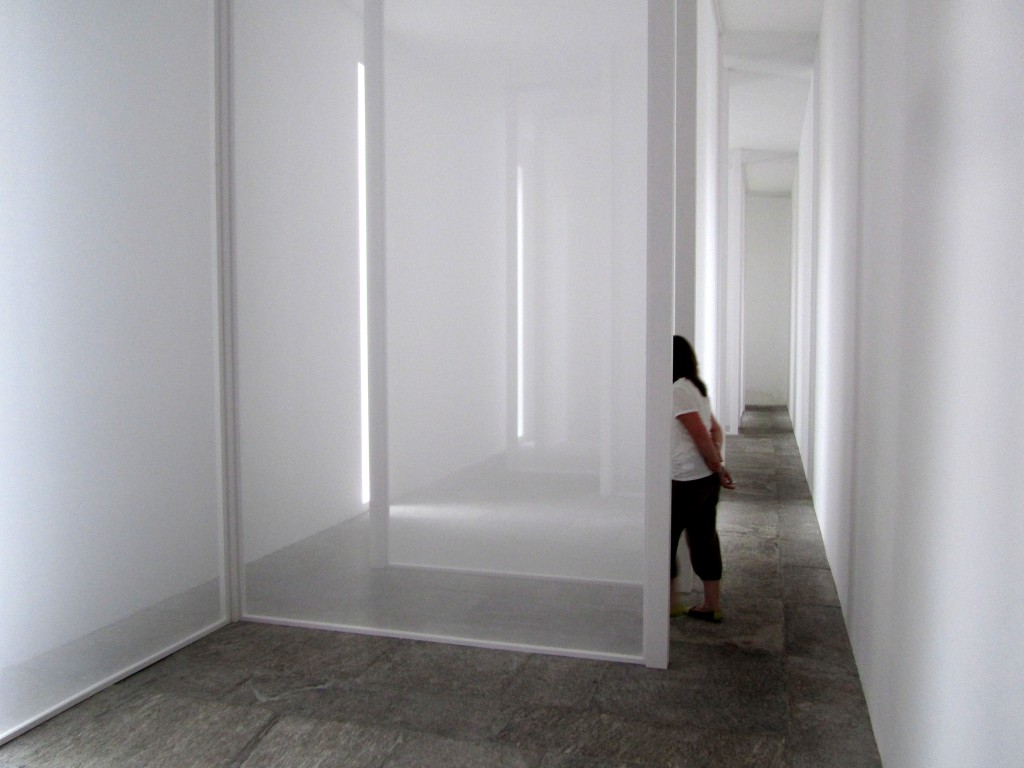

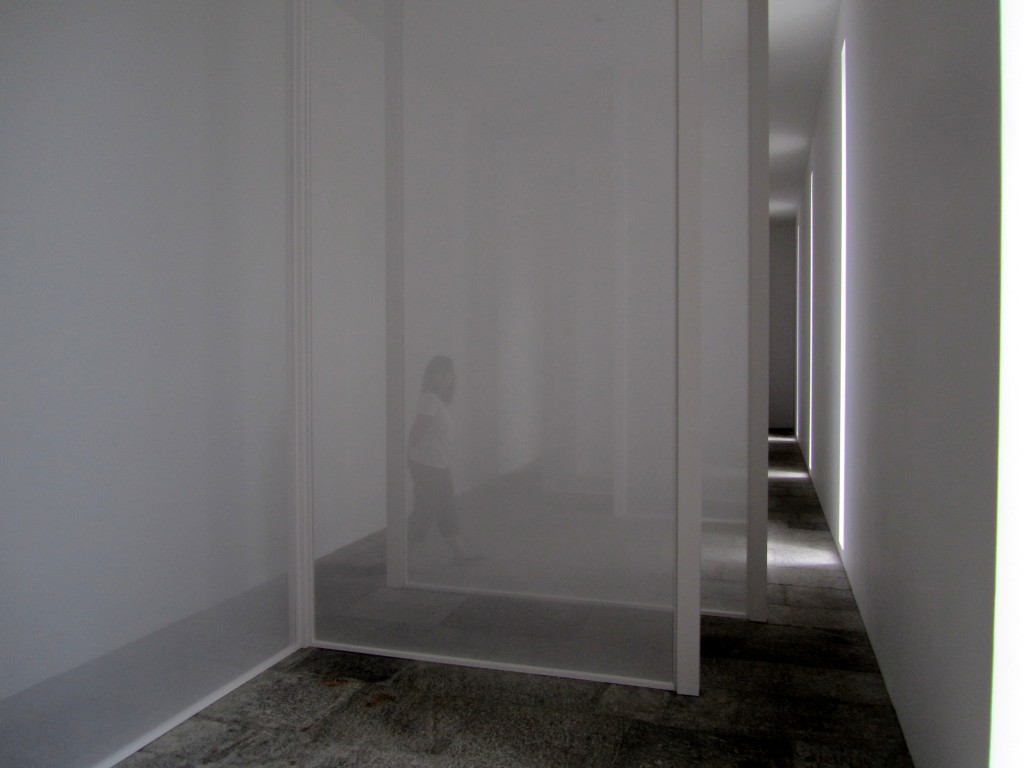
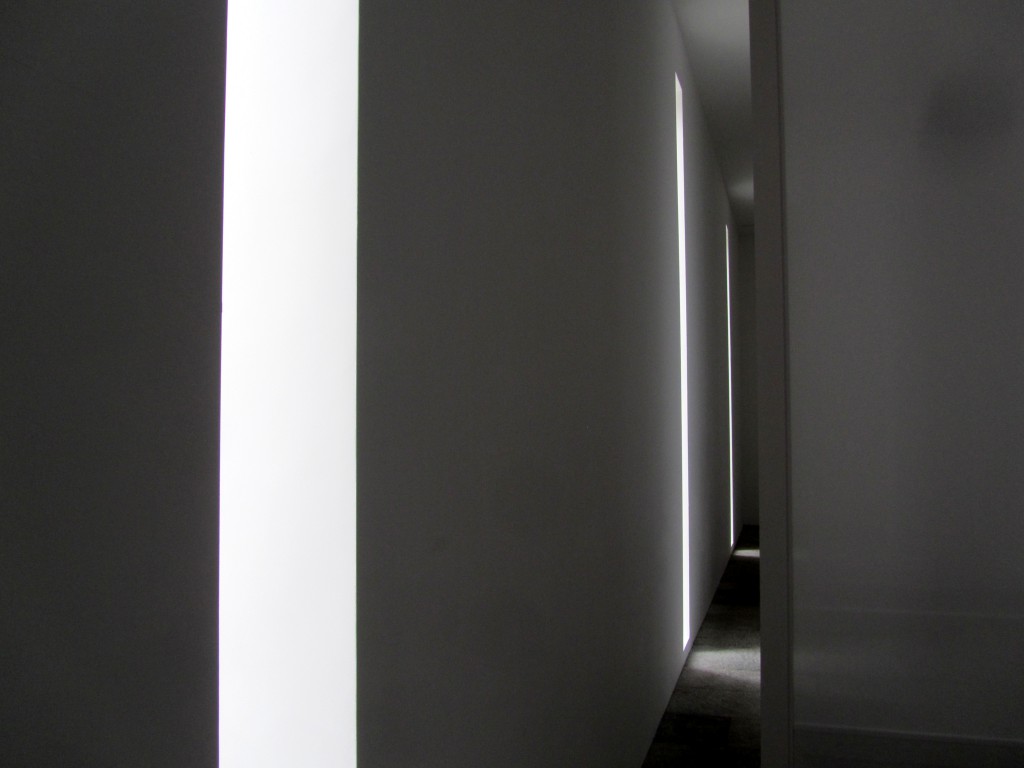
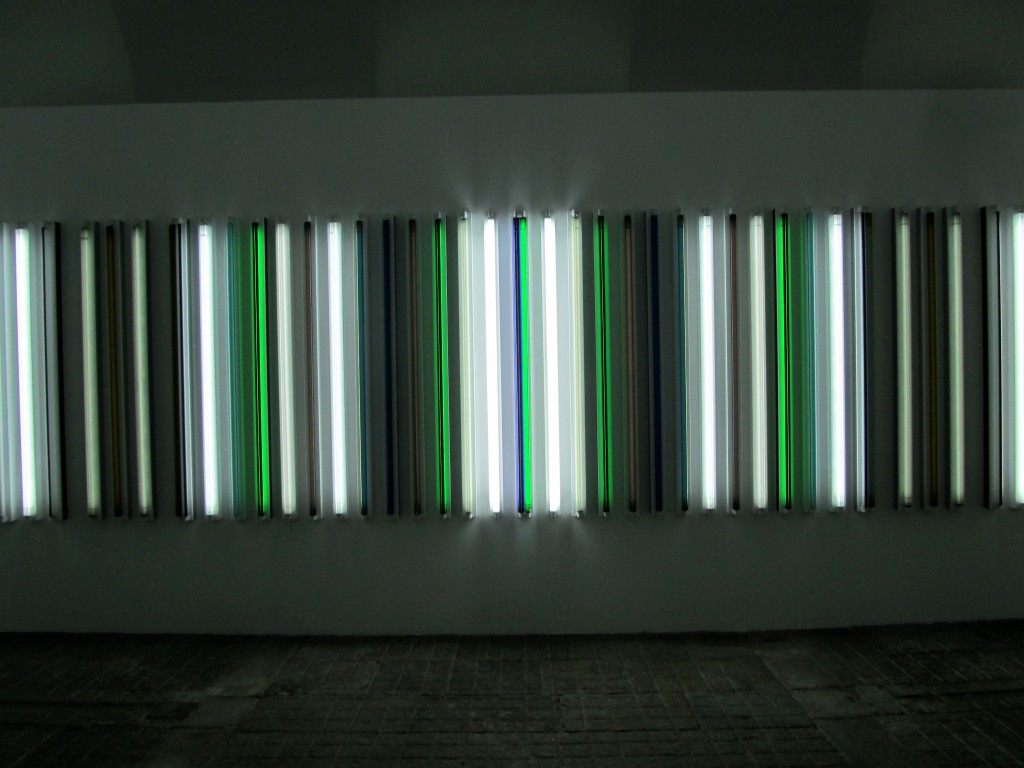
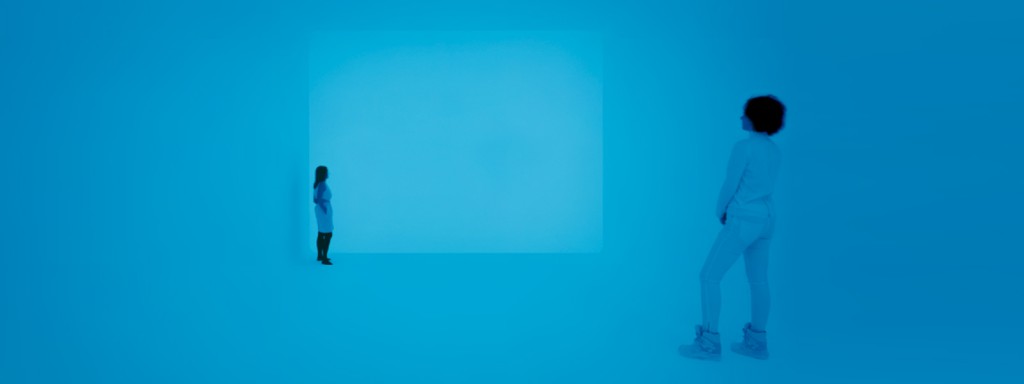
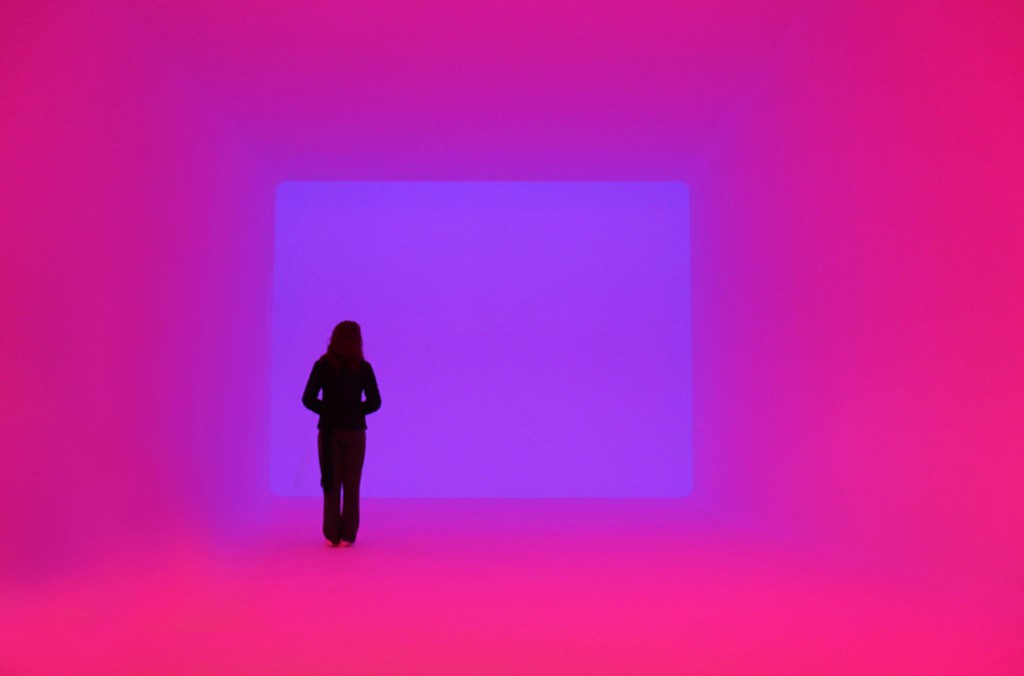
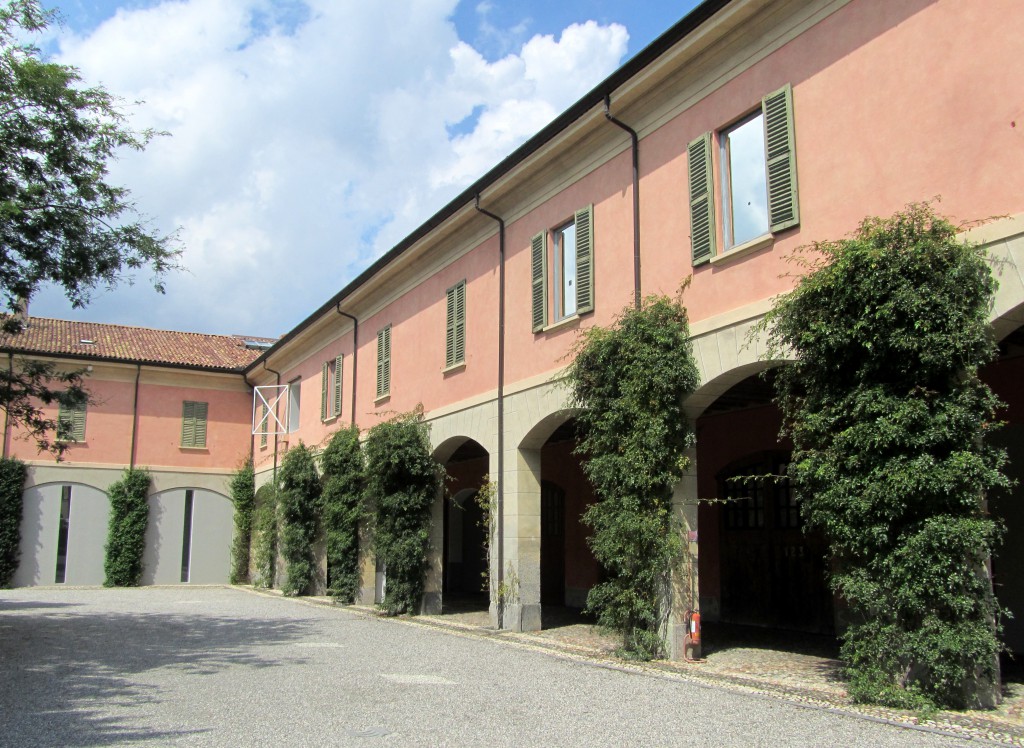
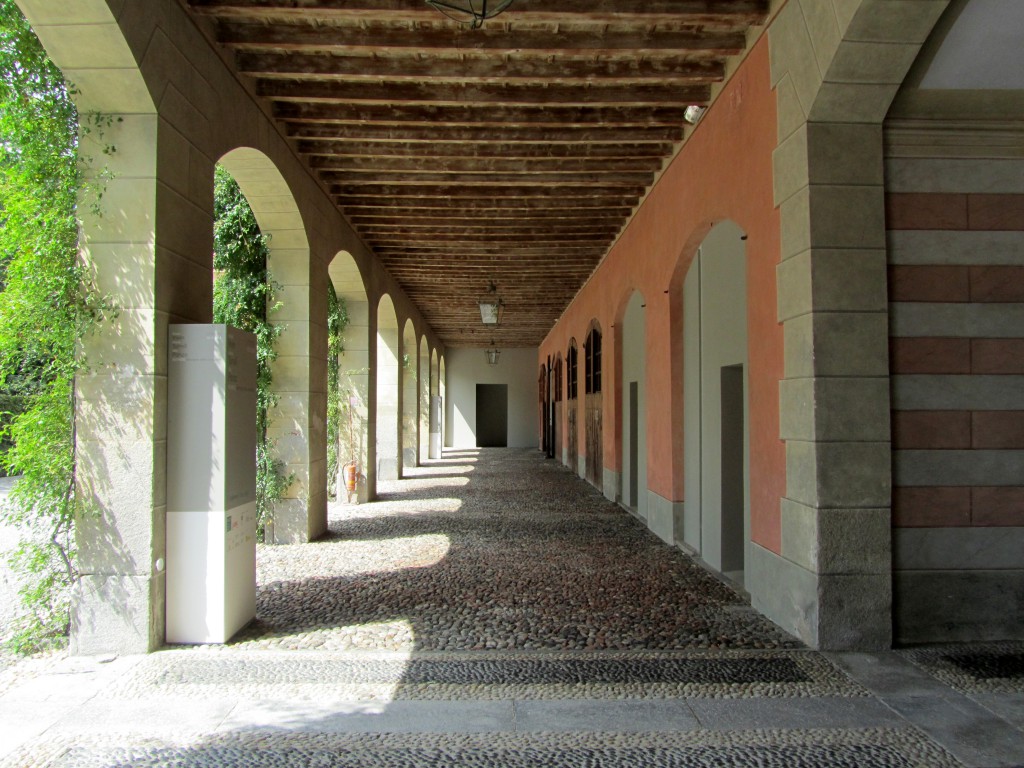
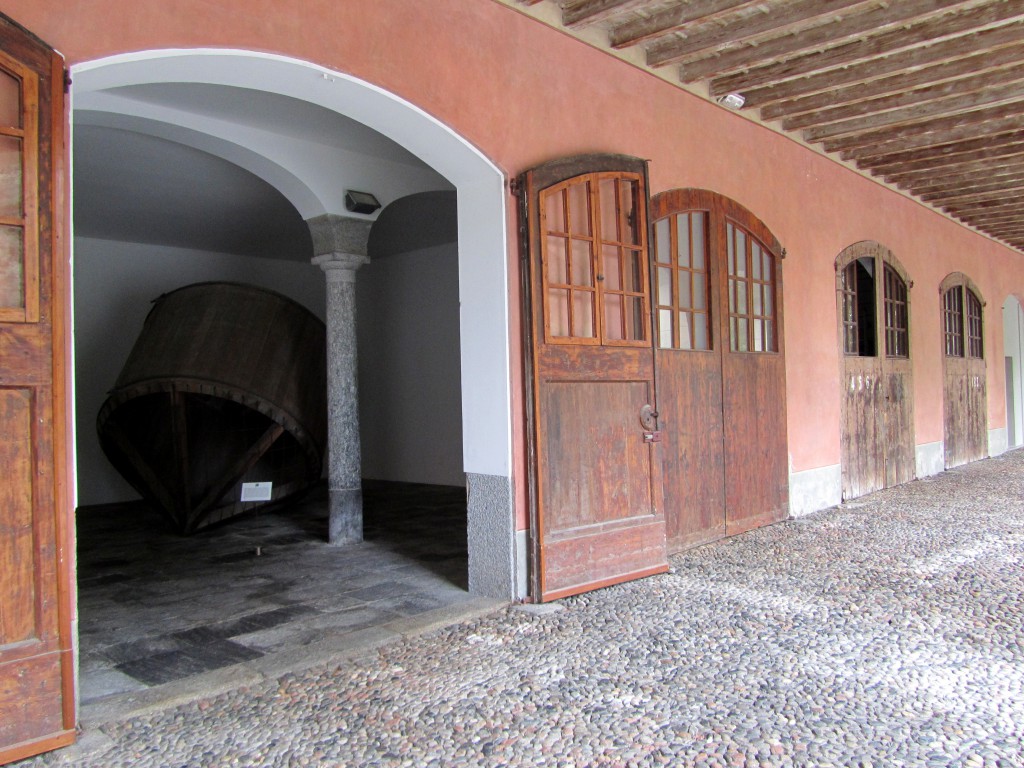
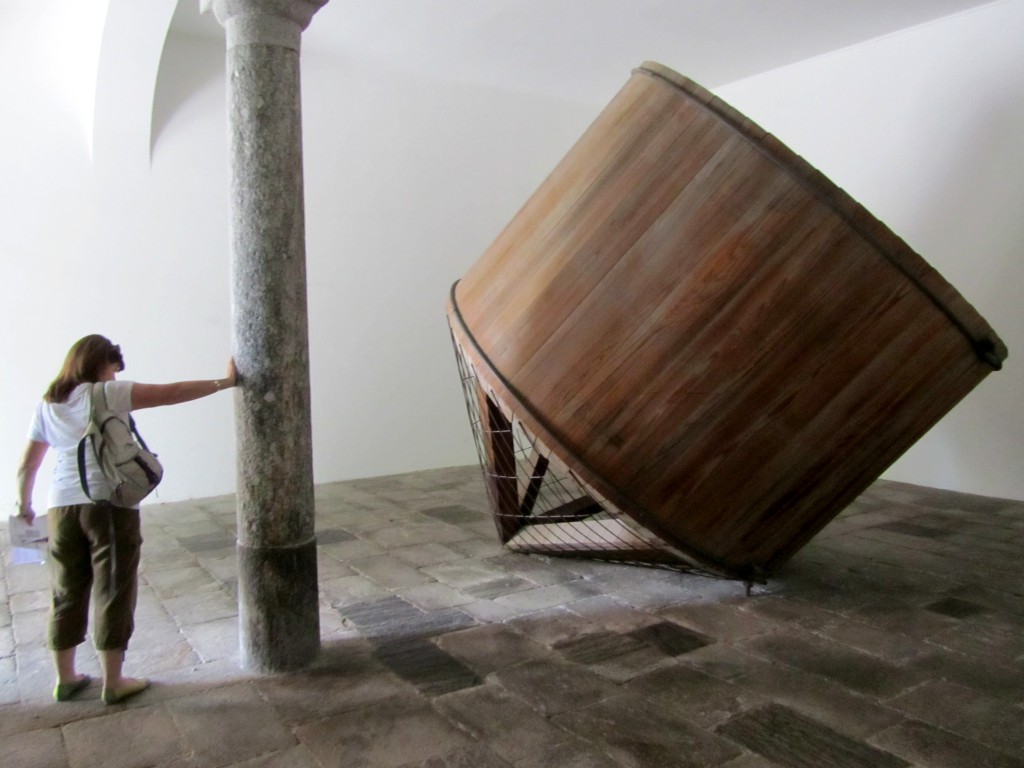

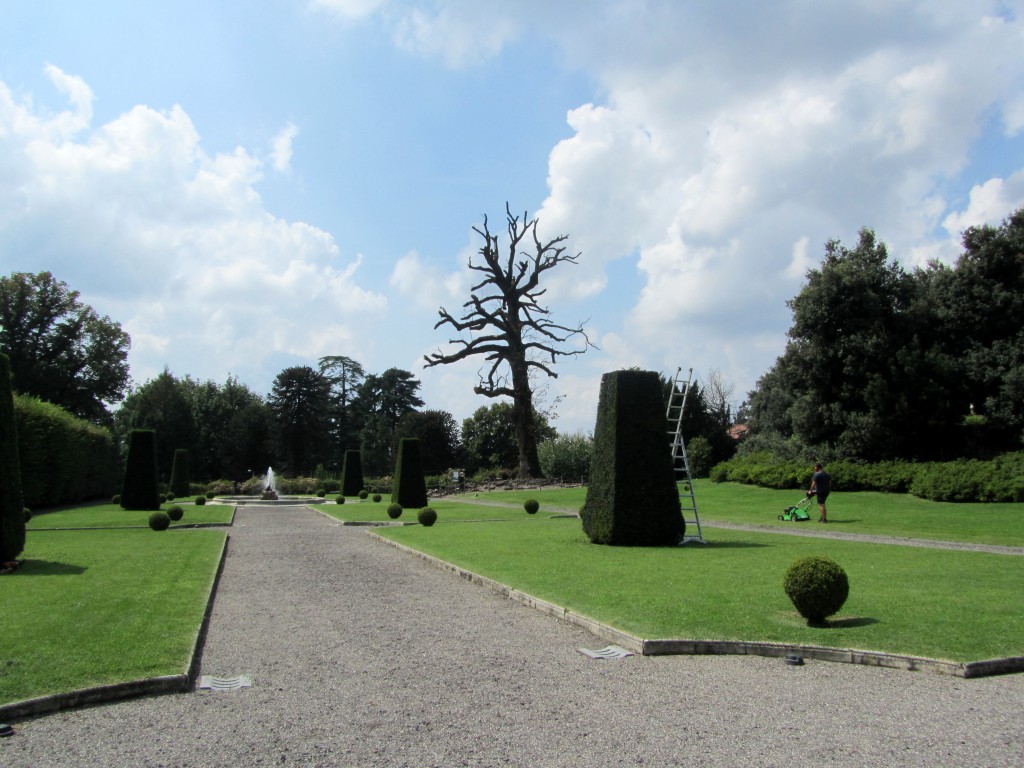

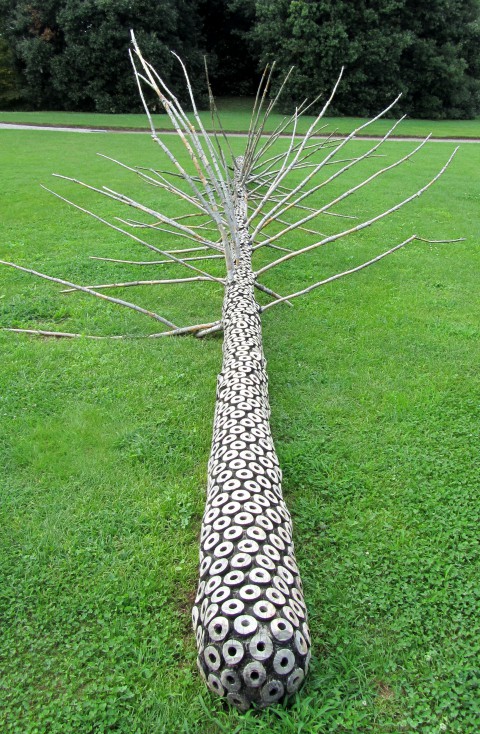

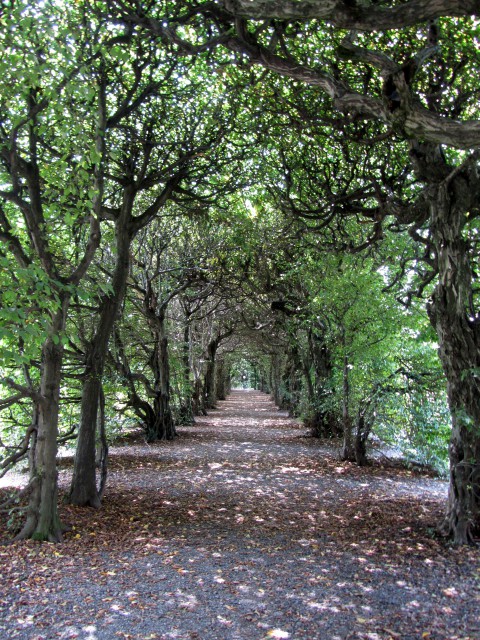
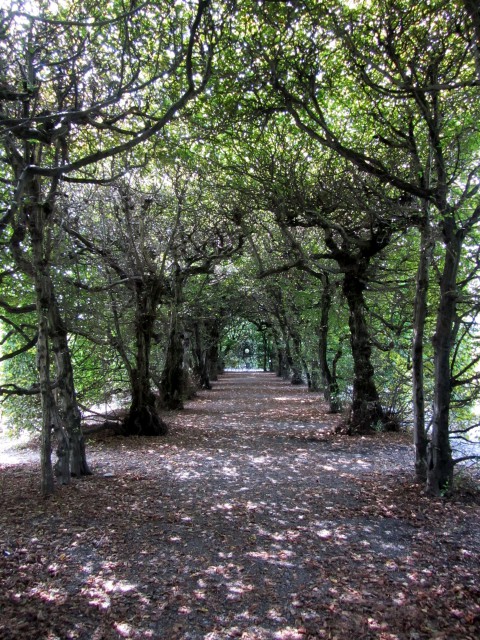
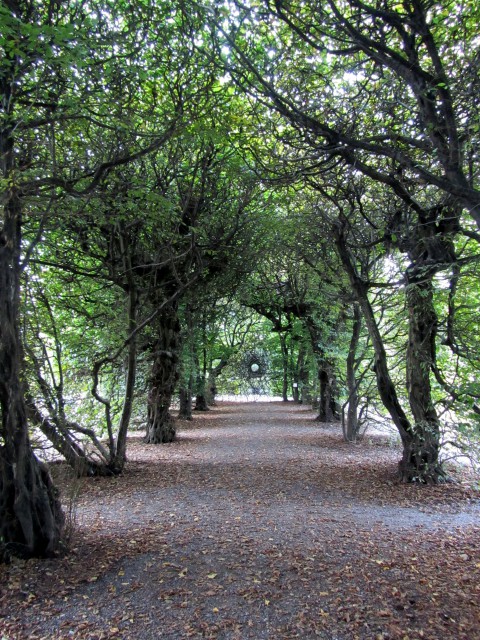

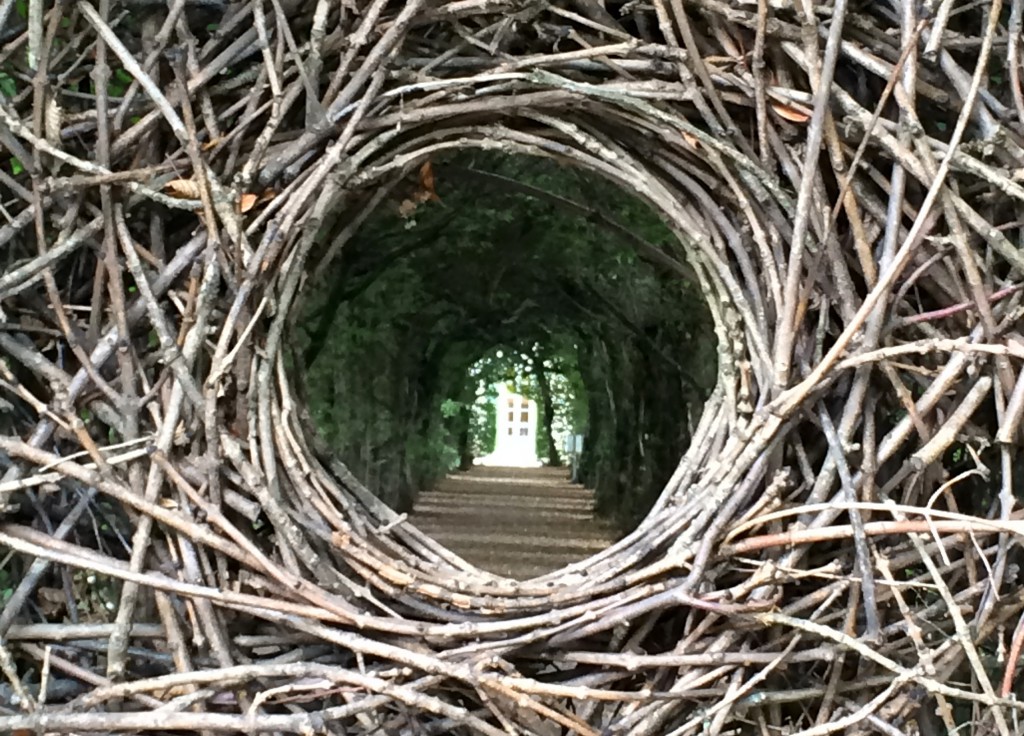

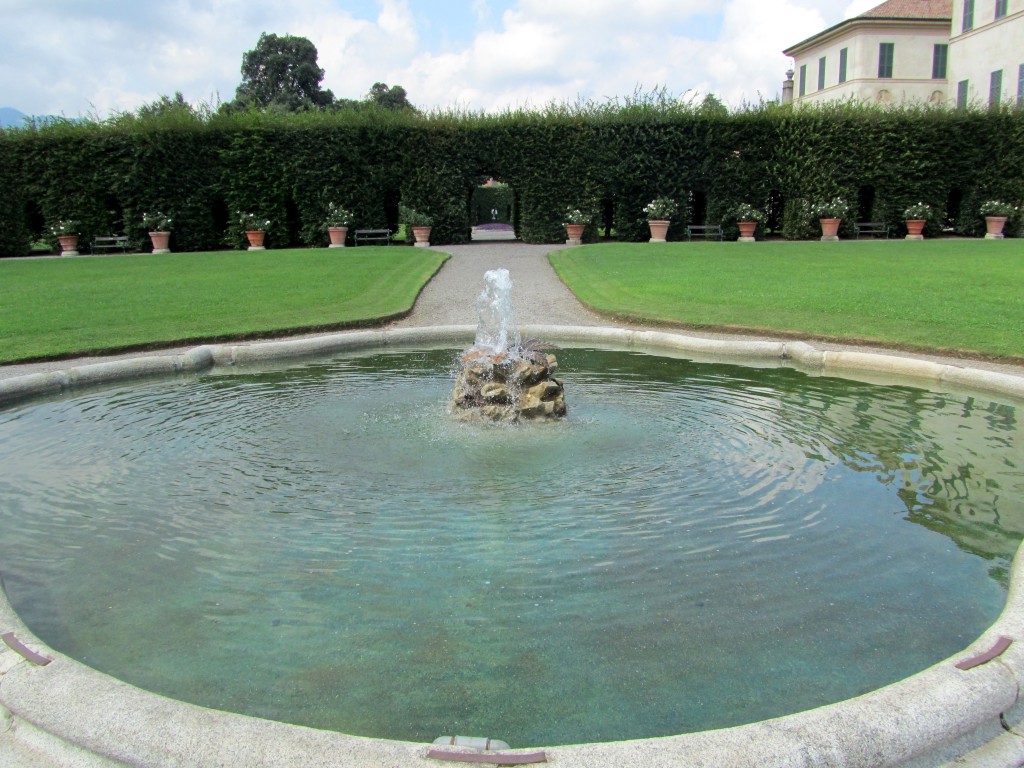
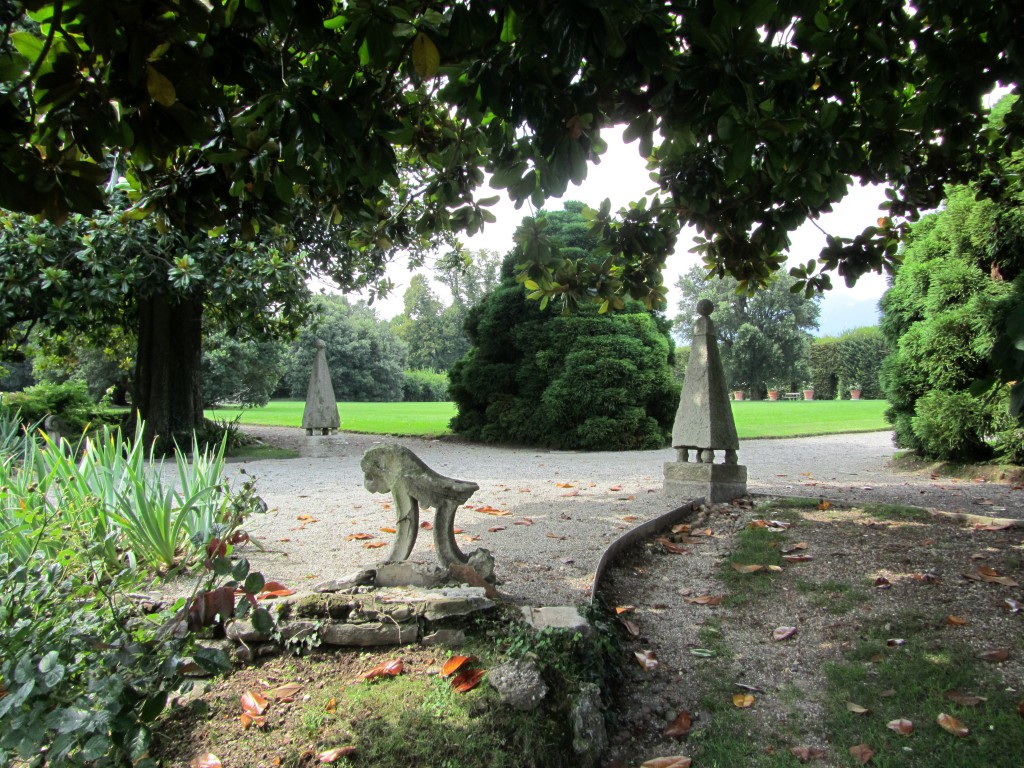
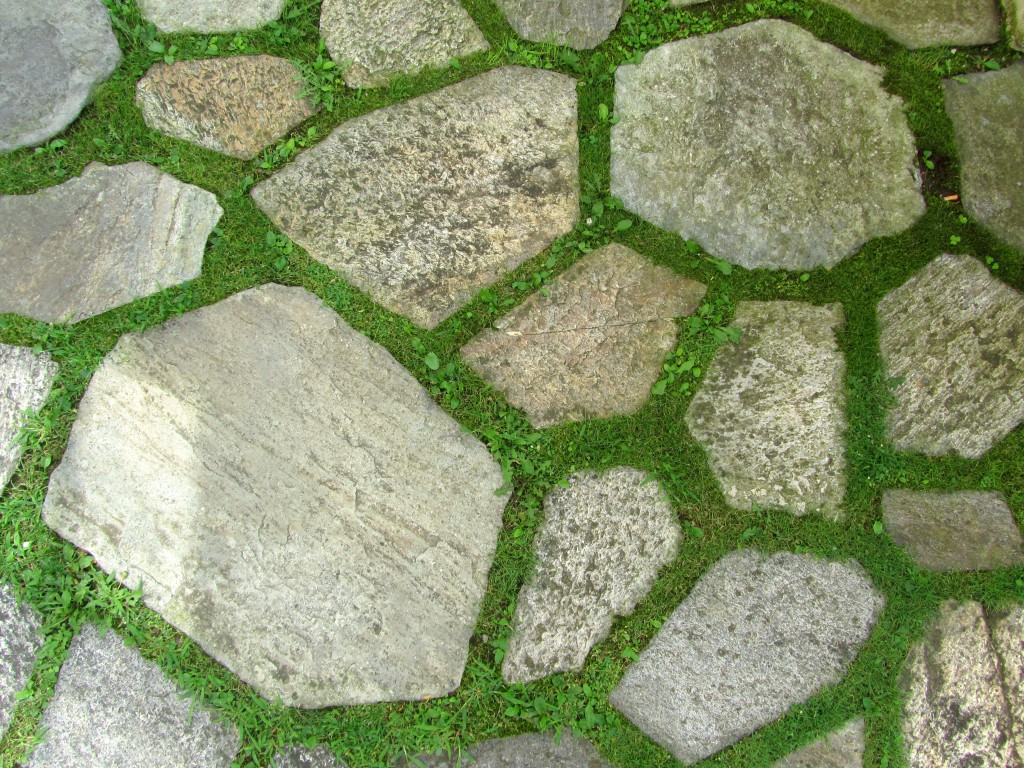
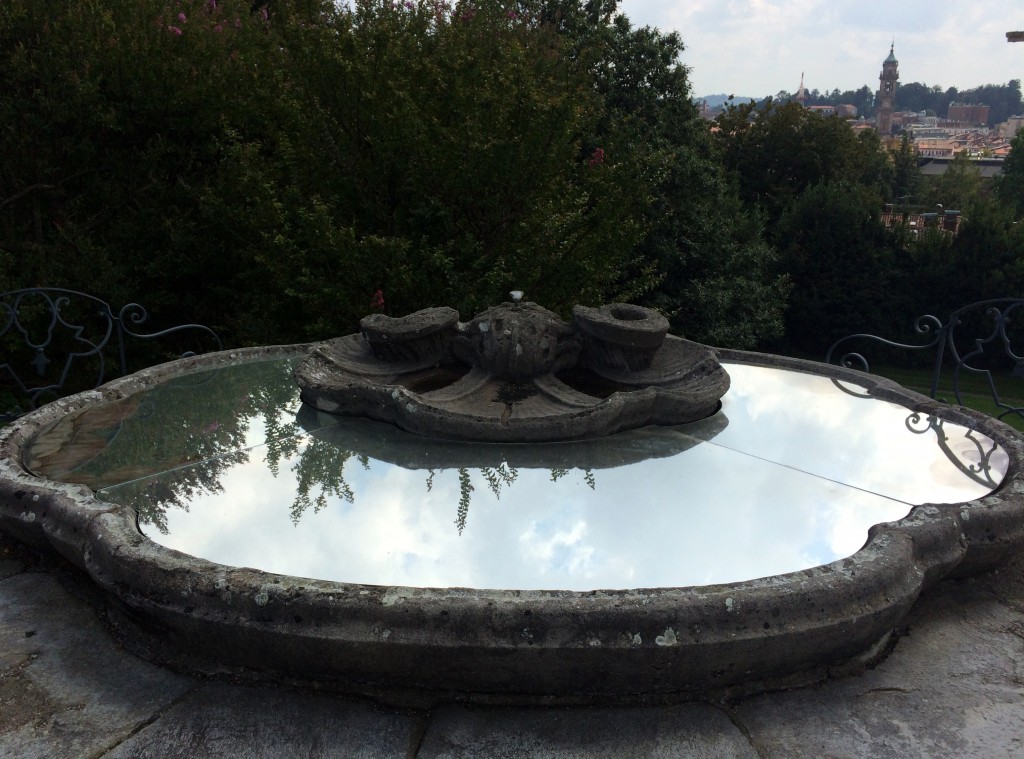
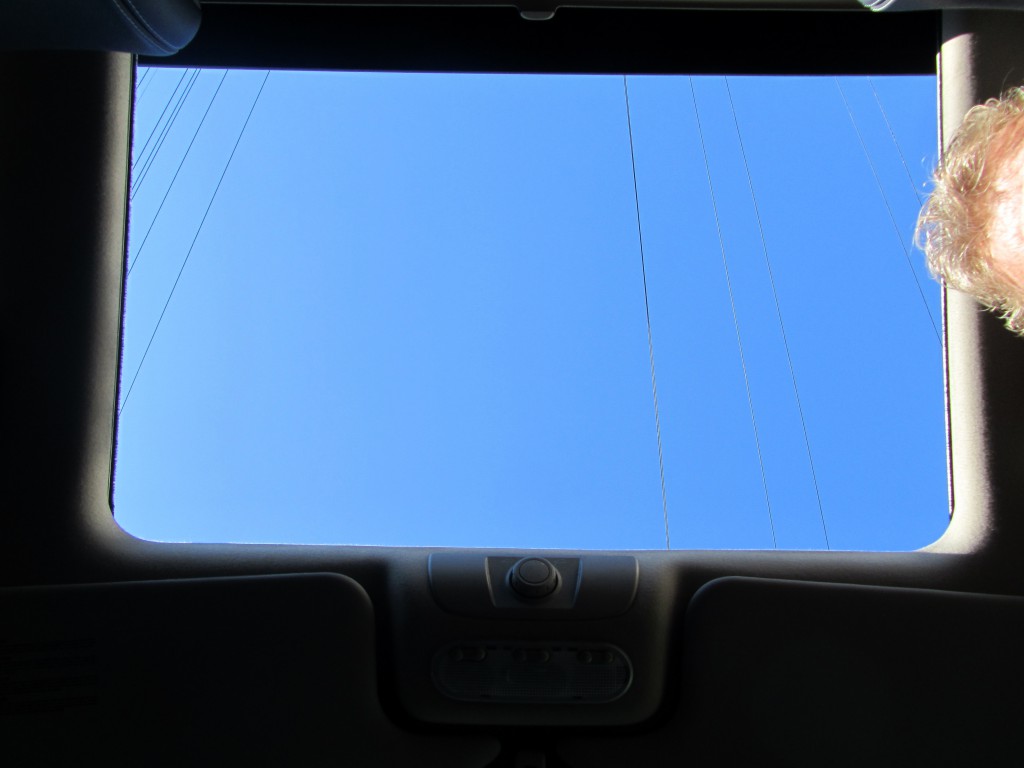
God said “Let James Turrell be,” and then there was light.
Fantastic Post; if possible, you’ve surpassed yourself.
Hank
There was lots of light, it’s a dazzling place.
There is much beauty here.
But isn’t there something disconcerting, unsettling, incongruous, about those stark canvases in places like an opulent billiards room?
Yes, those paintings did seem incongruous at first. I laughed out loud in the billiard room where the colours echoed the balls and the table, but I laughed in delight, it was beautiful.